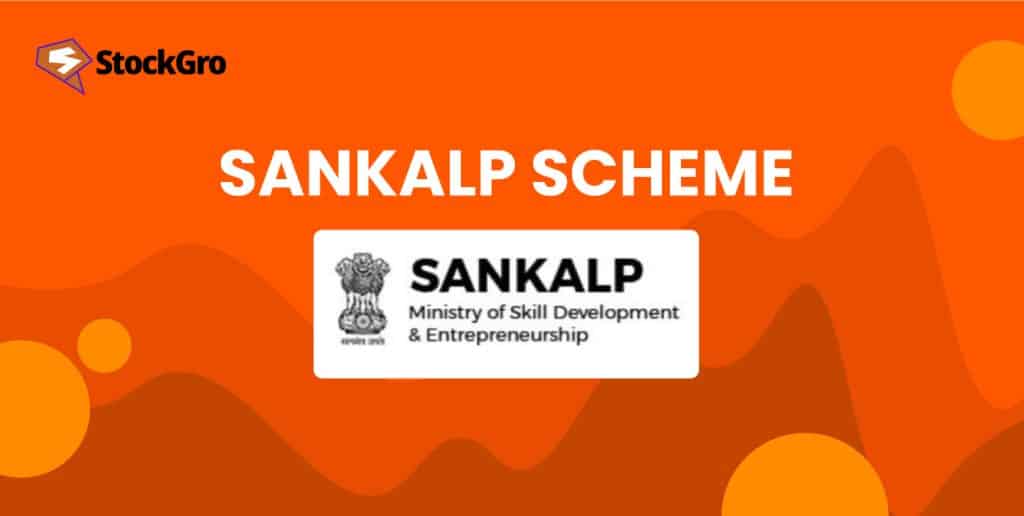
In this article, we’re going to talk about the Sankalp scheme – explore its features, eligibility criteria, key initiatives, and its lasting impact on the country’s skilling ecosystem.
Understanding the features of the Sankalp Scheme
Skill Acquisition and Knowledge Awareness for Livelihood Promotion (“SANKALP”) is a programme of the Ministry of Skill Development with loan assistance from the World Bank.
The goal of the policy is to improve short term skill training, both qualitatively and quantitatively, by strengthening institutions, bringing in better market connectivity, and including marginalised sections of the society into the initiative.
The project’s outcomes are assessed using the Results Framework and Disbursement Linked Indicators (DLIs) developed by MSDE and the World Bank.
CTA: Mudra yojna scheme for women
Features of the Sankalp Scheme
The policy boasts a unique set of features designed to revolutionise upskilling in India:
- Focus on short-term training: Recognizing the fast-paced nature of industries, the scheme emphasises the need of short-term, industry-relevant training programs. They plan to ensure that Indian college graduates enter the job market with the latest skills employers seek, maximising their employability and chances of finding a suitable job.
- Public-Private Partnership (PPP) model: Sankalp fosters collaboration between the government and private sector also. Under the terms of the policy, the government provides funding and infrastructure for implementation, while private companies design and deliver the training programs, leveraging their industry expertise and guidance in recruiting.
- Quality assurance measures: To ensure training programs meet rigorous quality standards, the scheme also incorporates a robust quality assurance framework. This includes curriculum development, trainer accreditation, and skill assessment mechanisms.
- Placement assistance: Sankalp goes beyond skilling by providing dedicated placement assistance to college graduates. This includes career counselling to ensure graduates know what they want to do, interview preparation, and connecting them with potential employers in networking events, etc.
- Focus on inclusivity: The scheme prioritises inclusivity by encouraging participation from marginalised communities, including women, persons with disabilities, and those from socio-economically disadvantaged backgrounds also.
CTA: Government loan scheme for unemployed youth
Eligibility for the Sankalp Scheme
The scheme primarily benefits those seeking new job opportunities or aiming to upgrade their skills for better career prospects.
It is available exclusively to Indian citizens only, and candidates who apply to the scheme have to be at least 18 years of age. This is done to ensure that candidates are old enough to receive and retain vocational training.
Basic education is also compulsory to ensure that they grasp the learnings of their training well. The program is open to, and encourages students from Scheduled Castes, Scheduled Tribes, and people with disabilities to participate.
Interventions under the Sankalp Scheme
The Sankalp scheme is divided into several sub-missions, each of which handle a different area of success under the same umbrella.
Here are some of them:
- Building capacity and decentralising authority to amplify impact: There are several initiatives under this level:
- Mahatma Gandhi National Fellowship (MGNF)
- Adarsh Gram Skill Camp, Skill India Portal (SIP)
- Capacity Building of State Skill Development Missions (SSDM), and more.
- Enhancing market relevance and quality: Sankalp aims to improve the quality and employability of graduates in India. They work to ensure that people across the nation have equal access to high-quality, market-oriented career training. Initiatives include the remodelling of training of trainers and assessors, establishing a committee for the standardisation of training content, and appointing student heritage ambassadors.
- Boosting inclusion and improving access: This is being done by creating a gender action plan to increase the participation of females in the workforce. People are also being trained on gender sensitisation and the prevention of sexual harassment in the workplace.
How long do Sankalp training programs typically last?
The beauty of Sankalp lies in its focus on short-term training. Programs can range from a few weeks to a few months, depending on the chosen skill and its complexity.
Are the training programs offered under Sankalp free?
In many cases, yes! Sankalp prioritises skilling for all. However, some programs might have nominal fees to cover training materials or assessments.
Does Sankalp guarantee me a job after completing the training?
While Sankalp doesn’t guarantee job placement, it offers dedicated placement assistance. This includes resume building, interview skills training, and connecting you with potential employers through job fairs or industry partnerships.
What if I want to pursue self-employment after the training?
Sankalp can empower your entrepreneurial journey too. Some programs might offer guidance on business plan development, loan applications, or connecting with microfinance institutions.
CTA: Government loan schemes for small businesses
What documents do I need to apply for a Sankalp training program?
Required documents typically include ID proof, address proof, educational certificates (if any), and potentially a recent photograph. The specific documents might vary depending on the program.

